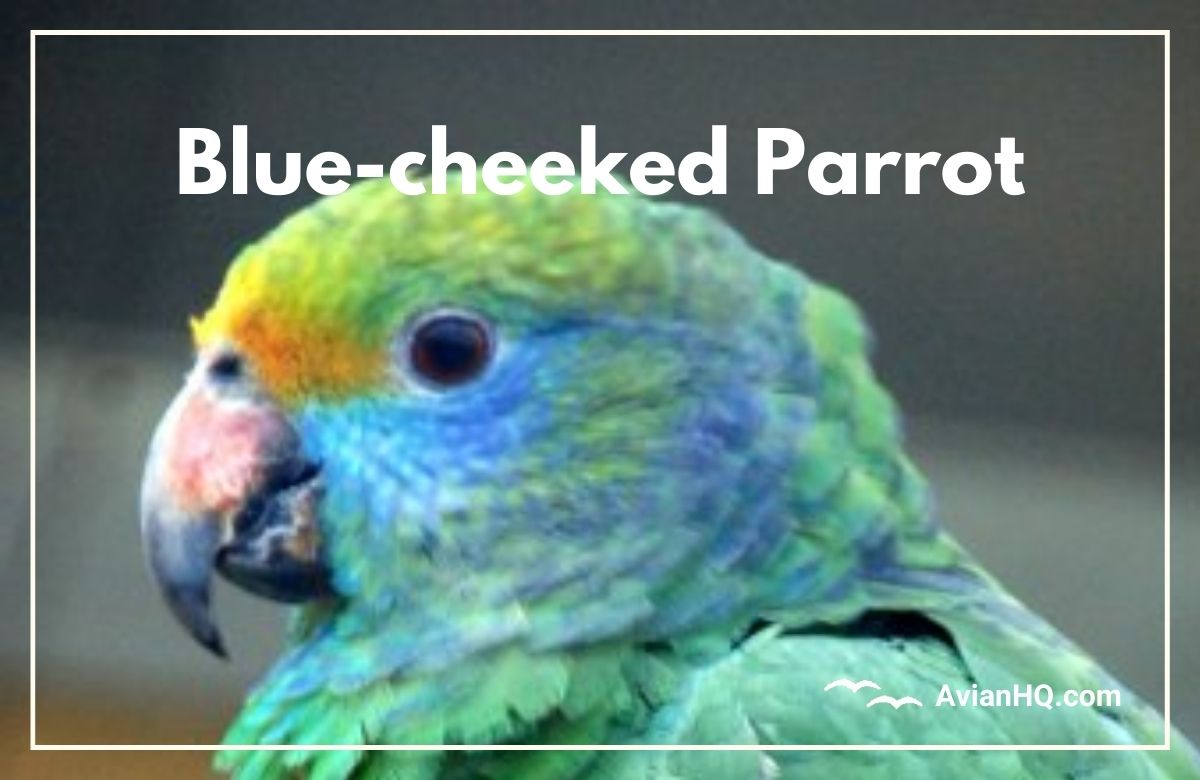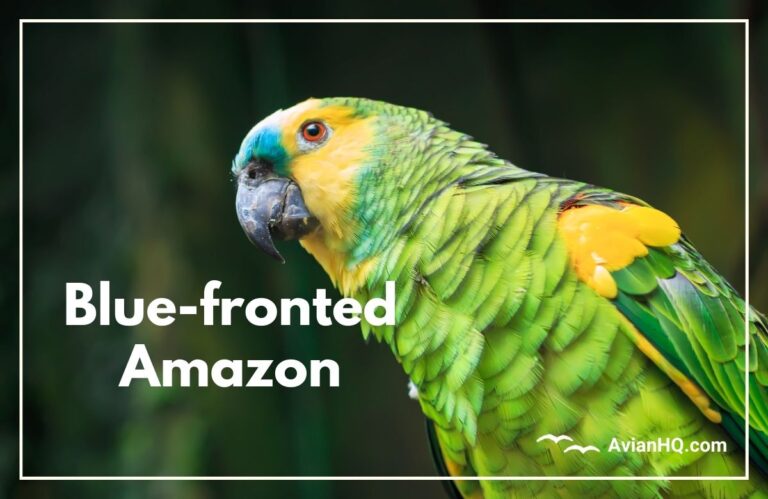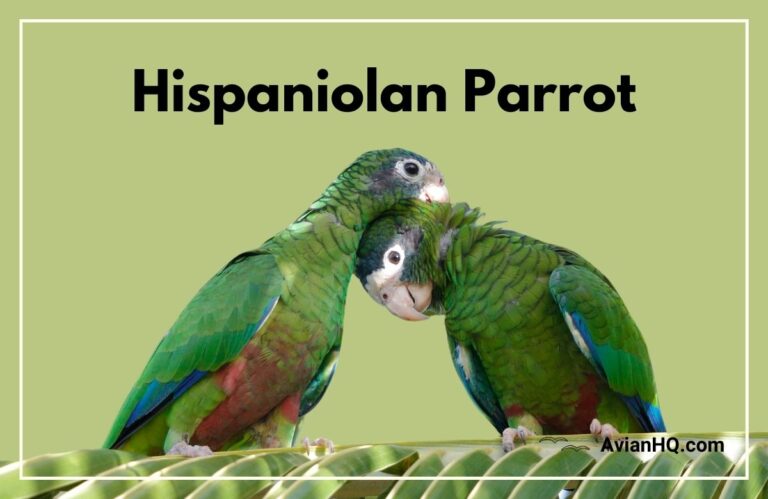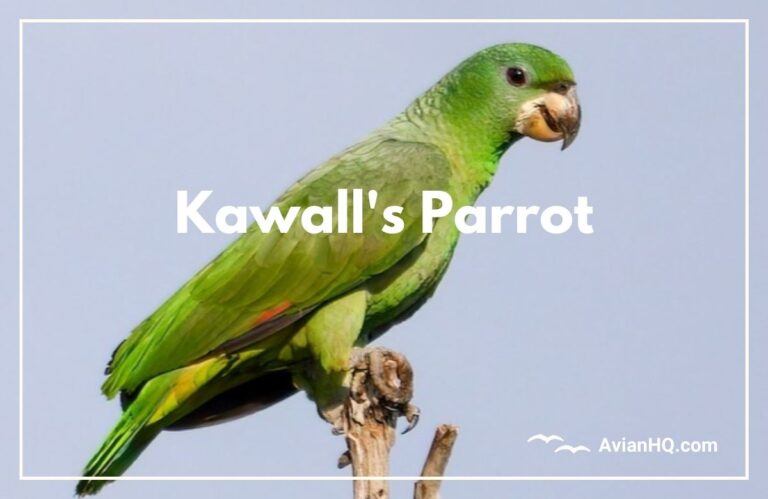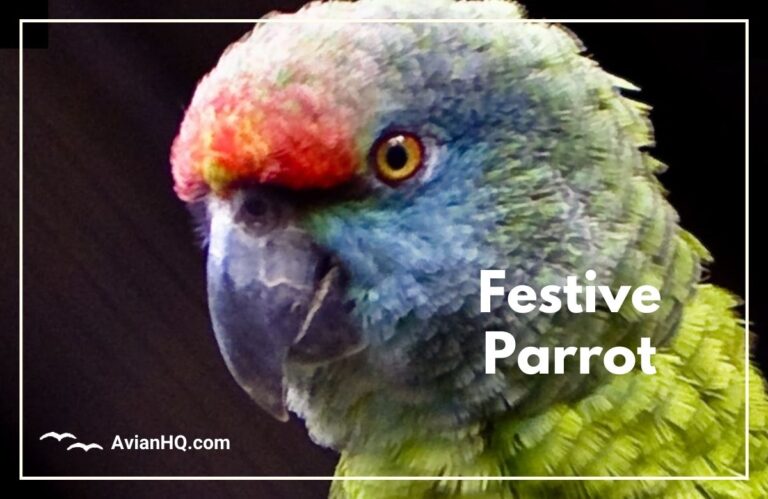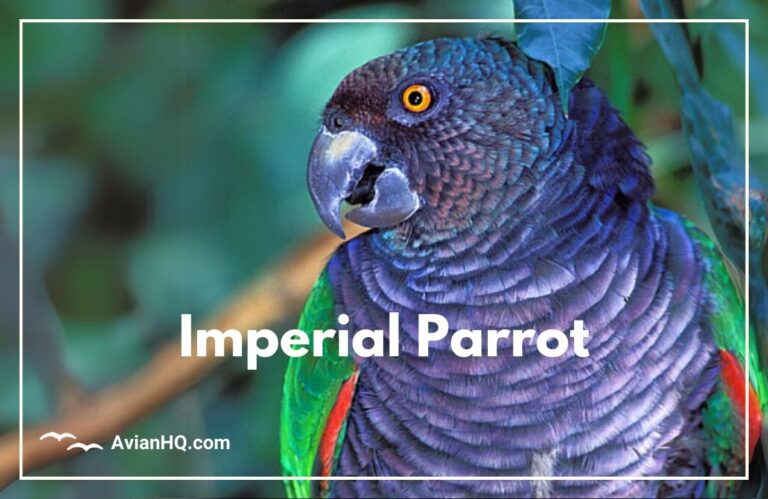Blue-cheeked Parrot (Amazona dufresniana)
You come across a vibrant green parrot with a striking blue cheek patch peering at you from the rainforest canopy. Upon closer look, you notice it’s bright yellow-orange wing patches and gray eye rings. You have encountered the blue-cheeked parrot, a rare and unique amazon parrot found in a few countries of northeastern South America.
With an estimated global population of only 6,000-60,000 mature adults, the blue-cheeked parrot has been designated as Near Threatened by the International Union for Conservation of Nature (IUCN). Though popular in the pet trade in decades past, today the blue-cheeked parrot remains relatively unknown compared to related, more common amazon parrots.
In this comprehensive guide, you will learn key details around the discovery, physical appearance, habitat, diet, breeding, behavior and conservation efforts surrounding the blue cheeked parrot. Gaining a well-rounded understanding of this species will shed light on why protecting rare parrots like this matters for maintaining diversity in rainforest ecosystems. Read on to become an expert on this exceptionally stunning and little-known parrot!
History and Taxonomy
The blue-cheeked parrot was first described scientifically in 1856 by French naturalist Charles Lucien Bonaparte, who named it in honor of the French zoologist Louis Dufresne. It’s scientific name remains Amazona dufresniana today.
Originally, the red-browed amazon (Amazona rhodocorytha) was considered a subspecies of the blue-cheeked parrot. However, the blue-cheeked parrot is now classified as a monotypic species, meaning it has no distinct subspecies.
The blue-cheeked parrot’s evolutionary relationships with other amazon parrots continues to be elucidated. Some experts hypothesize it may form a “superspecies” with the red-tailed amazon (Amazona brasiliensis) and the red-browed amazon, but more research is needed.
While no subspecies are recognized, the blue-cheeked parrot has a relatively limited native distribution in South America. It remains confined to remote rainforest regions of Guyana, Suriname, French Guiana, southeastern Venezuela, and possibly adjoining parts of Brazil. This restricted range and specialized habitat preferences contribute to it’s vulnerable conservation status today.
Physical Appearance
The blue-cheeked parrot is a medium-sized amazon, reaching 13-15 inches (34-37 centimeters) in length and weighing around 17-22 ounces (480-615 grams).
Its plumage is predominantly bright green. As the name suggests, adult blue-cheeked parrots have a distinctive lavender-blue patch of short feathers extending from below the eyes down the cheeks to the upper neck. The blue cheek coloring is more subdued in juvenile birds.
Other prominent markings include a yellow-orange wing patch formed by the yellow and orange secondary wing feathers. Blue-cheeked parrots also have yellow feathers on the forehead transitioning to green on top of the head and neck. Orange-red feathers can be seen above the base of the gray bill. The eyes are encircled by distinctive thick gray eye rings, and the irises are orange-red.
Males and females look nearly identical externally. Juveniles resemble adult plumage but with duller yellow feathers on the head and less vivid blue on the cheeks.
No color variation has been documented between different regional populations of this species across it’s range. Overall the blue-cheeked parrot’s vibrant mix of green, blue, yellow and orange makes it one of the most striking amazon parrots.
Habitat and Distribution
The blue-cheeked parrot occupies a relatively small native range in the remote rainforests of northeastern South America. It’s distribution spans across Guyana, Suriname, French Guiana and southeastern Venezuela, possibly extending marginally into northern Brazil.
This species inhabits tropical lowland humid forests and cloud forests, mainly residing in hill and foothill zones. In Venezuela, it also occurs in subtropical savanna woodlands. The blue-cheeked parrot has been observed at elevations up to approximately 5,600 feet (1,700 meters) in the region.
Some seasonal movements have been noted, primarily migrations between interior forests and coastal areas of Suriname timed with food availability. But in most parts of it’s range, the blue-cheeked parrot appears to be generally sedentary and does not migrate over long distances.
No introduced or escaped populations have become established outside the blue-cheeked parrot’s native range. And within it’s home range, the species tends to be considered rare to uncommon, adding to it’s vulnerable conservation status. Protecting existing lowland rainforest habitat across northeastern South America is crucial for ensuring the future of this rare regional endemic.
Diet and Feeding
Like other amazon parrots, the diet of the blue-cheeked parrot likely consists mainly of seeds, fruits, nuts, blossoms and other plant material. However, detailed analyses of stomach contents are lacking.
Based on observations and the feeding ecology of close relatives, the blue-cheeked parrot is believed to be primarily frugivorous and granivorous. It probably consumes a wide assortment of seeds and fruits from canopy trees and vines. Potential food items include figs, palms, seed pods and berries.
This species forages for food mainly high up in the rainforest canopy. It uses it’s curved bill and feet to grasp and manipulate various plant parts and it’s strong jaw muscles to crack hard nuts and seeds.
Movements between interior forests and coastal regions of Suriname have been speculated to coincide with the ripening of certain preferred fruits. Like other amazons, the blue-cheeked parrot may therefore exhibit some seasonal shifts in diet and habitat use tied to food availability.
Overall however, the diet and nutritional needs of this rare species are very poorly known. Targeted studies of stomach contents and field feeding observations are still needed to better determine what this species actually eats in the wild.
Breeding and Reproduction
Very little information exists on the blue-cheeked parrot’s breeding habits in the wild. Most current knowledge comes from observations of captive birds.
The blue-cheeked parrot likely nests in tree cavities, as is typical of other amazon parrots. However, no nest sites have been described from the wild thus far. In captivity, clutch size averages around 3 eggs.
Incubation lasts 23-26 days before the eggs hatch. The altricial chicks are cared for by the parents in the nest cavity for several weeks. In related amazon species, chicks typically fledge at 8-10 weeks old.
Based on just a few breeding records, the blue-cheeked parrot appears to nest during the rainy season from around March-August in it’s equatorial habitat. But more field studies are needed to determine timing of breeding cycles and preferred nest sites across different parts of it’s range.
Documenting details like average clutch sizes, incubation times, and chick development rates in wild populations remains an important goal. Expanding our understanding of the blue-cheeked parrot’s reproduction can guide future conservation measures needed to sustain wild populations.
Behavior and Ecology
The blue-cheeked parrot exhibits typical parrot behaviors but aspects of it’s ecology in the wild are still rather obscure.
This species is highly social, occurring in pairs or small to medium-sized flocks of up to 30 individuals. Groups may congregate at clay licks or fruiting trees. Several flocks will also communally roost together at night in cavity trees or cliff faces, potentially numbering over 100 birds.
During the day, the blue-cheeked parrot spends most of it’s time high in the rainforest canopy foraging for food. It uses it’s strong bite and nimble feet to extract seeds and manipulate fruits and flowers. This species is described as active and noisy, constantly making a variety of loud vocalizations.
Blue-cheeked parrots are non-migratory through most of their South American habitat. But as mentioned, some populations do exhibit local seasonal movements between interior forests and coastal areas, likely correlated with food availability.
Possible interspecies interactions are unknown but likely include competition with other amazon parrots occupying the region. Overall, we still have much more to uncover when it comes to the behavior and ecosystem roles of this rare and little-known parrot.
Conservation Status
The blue-cheeked parrot is currently classified as Near Threatened on the IUCN Red List of Threatened Species. It’s total global population is estimated to number between 6,000-61,000 mature individuals.
Unfortunately, populations are suspected to be decreasing across most of it’s native range. Major threats include ongoing habitat destruction, capture for the pet trade, and mining activities.
Across the Guianas and Venezuela, lowland humid rainforest habitat continues to be logged, cleared, and fragmented. Mining for gold and diamonds is also encroaching on protected wilderness areas used by this species.
Although no longer as severe as decades ago, illegal poaching of blue-cheeked parrot chicks for the wildlife trade still occurs. Over 700 live birds were officially exported from Guyana alone from 1981-1985.
Efforts are underway to curb trapping and preserve suitable forest ecosystems. The blue-cheeked parrot occurs in some protected areas across it’s range, but more reserves are needed. Bolstering law enforcement and expanding environmental education can further reduce exploitation.
While blue-cheeked parrots remain sparsely populated, strategic conservation initiatives focused on this species can help secure rainforest strongholds vital for their future survival.
Cultural Significance
The remote range of the blue-cheeked parrot has limited it’s exposure and significance within human cultures historically. And as a relatively little-known amazon, it does not share the same ubiquitous popularity in captivity as some close relatives.
However, indigenous groups living around parts of the Guiana Shield where this species occurs likely had occasional interactions with these colorful parrots over time. Some capture for food or ceremonial purposes probably occurred.
More recently, the blue-cheeked parrot was heavily traded internationally for the pet industry during the late 20th century. It’s brilliant plumage and appealing personality made it a favorite among collectors and breeders.
Conservation laws have since curbed much of this trade, but illegal trapping continues in remote areas. While avicultural interest persists, importing wild-caught blue-cheeked parrots has fortunately subsided.
Going forward, this species could serve as an eye-catching flagship used to promote protection of northeastern South America’s rich but imperiled ecosystems. It’s uniqueness offers opportunities to raise awareness about parrot diversity and vulnerabilities worldwide.
Conclusion
The blue-cheeked parrot remains one of the most vibrant yet least-understood amazon parrots within the Psittacidae family. It’s restricted endemic range and specialized habitat preferences make it vulnerable to extinction.
While we still have much to uncover about the natural history of this species, it fills an important ecological role as a seed disperser and pollinator for canopy trees. Preserving delicate rainforest networks across northeastern South America is the key to ensuring the blue-cheeked parrot’s future.
Despite facing concerning population declines, strategic conservation initiatives focused on habitat protection, trade controls, and environmental outreach can help safeguard this rare parrot. Tapping into it’s stunning looks to promote awareness offers hope.
Moving forward, more field studies documenting the diet, reproduction, and behavior of the blue-cheeked parrot can further advance conservation planning. Solving some lingering mysteries will underscore why ensuring the survival of this and similarly threatened species matters.
By supporting organizations working to protect rare wildlife like the blue-cheeked parrot, individuals everywhere can make a meaningful difference. It will take the persistence of many to guarantee vibrant rainforests—and this dazzling inhabitant within them—endure for generations to come.

